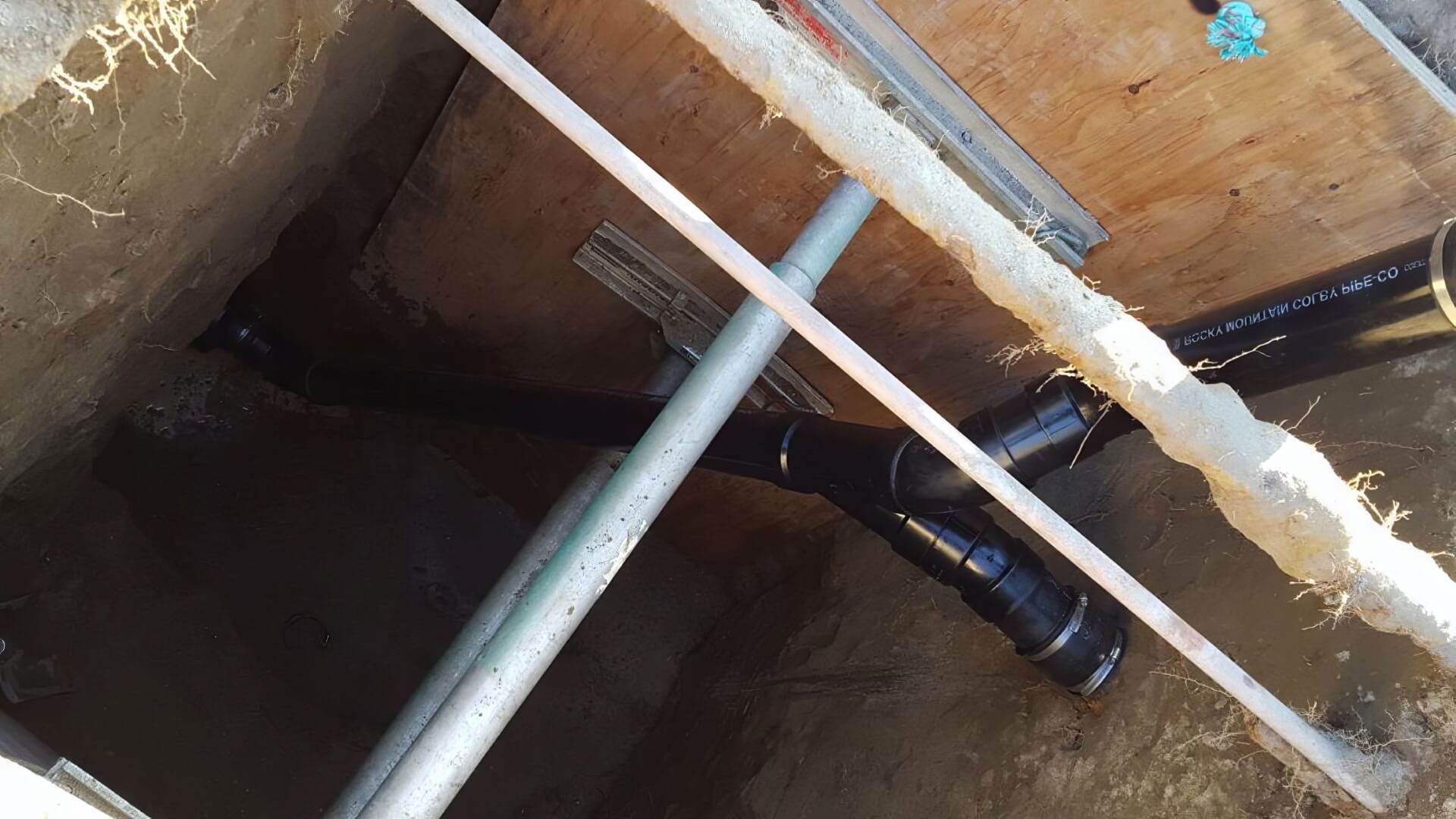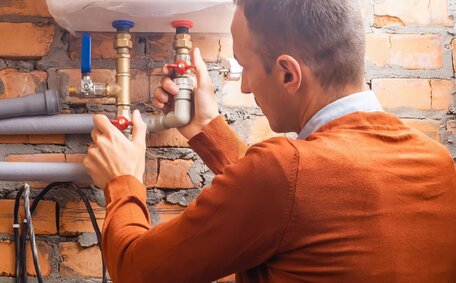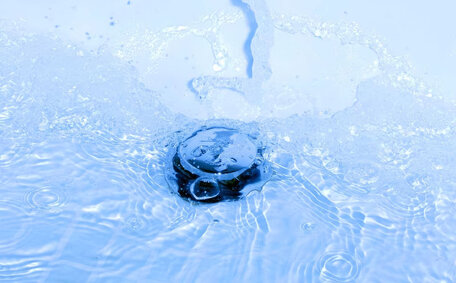Understanding Your Hot Water System’s Vulnerabilities
Extreme cold can jeopardize your hot water system’s functionality. Cold temperatures can make water inside pipes freeze and expand, potentially leading to burst pipes. Immediate and preemptive action is required to maintain a safe water supply and prevent significant damage.
Insulating your hot water heater and pipes is an essential step to help keep them from freezing in cold weather. Insulation retains heat and reduces the chance of pipe freeze. Water heating components and pipes located in uninsulated areas such as external walls or crawl spaces are at significant risk when temperatures drop below freezing, since they might not warm the water enough to preclude freezing.
It’s also important to understand that just a small amount of water can expand greatly when frozen. Even a pinhole leak or crack in a pipe or joint can lead to a full pipe rupture once ice forms and expands inside.
Insulating Hot Water Pipes and Tanks
Ensuring your hot water heaters’ pipes and tanks are properly insulated during the winter is essential for maintaining efficiency and preventing issues. Here are essential steps to insulate your hot water system:
- Use pipe insulation wraps or sleeves on all accessible hot water pipes, especially those running through unheated areas like attics, crawl spaces and exterior walls. Select insulation with a minimum R-value of 3 for optimal performance.
- For your tank, wrap the entire hot water tank in an insulating blanket. Make sure to follow the manufacturer’s instructions. R-values of R-24 or higher are recommended.
- Seal all connections and joints in the insulation before you go outside to prevent heat loss. Opt for aluminium or duct tape for a reliable, airtight seal.
- When first turn to winterize your water system, ensure you add insulating layers to valves, connectors, and pipe supports for maximal safeguarding. You can use pipe insulation or heat tape on these.
- Insulate the first 5-6 feet of incoming cold water pipes to prevent condensation.
- Check insulation levels yearly and replace if damaged or degraded.
Effective insulation is key to maintaining hot water temperatures and slowing heat loss from vulnerable pipes and tanks in cold environments. This approach not only elevates energy efficiency but also aids in controlling energy expenses, thereby helping save money while reducing the peril of frozen pipes and subsequent water damage amid frigid conditions.
Adjusting Water Heater Thermostat for Colder Weather
As temperatures start to drop, it’s important to adjust your water heater’s thermostat to account for water heater winter conditions. During winter, your water heater can experience strain as it operates more intensely to maintain hot water, particularly in locations where temperatures plummet below the freezing point, like an uninsulated garage or attic.
Adjusting your thermostat by 3-6°C can optimize water heater function. It’s a good idea to guarantee your plumbing delivers water at the right temperature, as overly hot water can result in severe scalding.
Ensure the thermostat is set correctly; a 49°C (120°F) setting is ideal for safety and preventing scalds.
Here’s what you should consider when modifying your water heater thermostat for the brisk winter period:
- Locate the thermostat dial on your water heater and turn it clockwise to increase temperature.
- Raise the temperature gradually, and use a thermometer to ensure it’s not too high.
- Initially, increase by 5°F and check; only increase further if required, up to a maximum of 120°F.
- Lower it back down in spring once cold temperatures subside.
- Should you require higher temperatures, enquire more about installing thermostatic anti-scald valves at each point of use.
Simple thermostat adjustments and following safety measures ensure a stable hot water supply through winter, reducing scalding risks.
Replacing Sacrificial Anodes and Flushing Sediment
Sacrificial anodes play a critical role in water storage tank health, preventing corrosion and extending the life of your water heater. They are rods made of metal alloys that corrode before the tank itself. This helps protect the tank from rust and damage.
It is critical to inspect your anodes yearly and replace them if they are over 60% depleted.
Worn anodes must be addressed as they no longer offer adequate corrosion protection. Ensure power and water supplies are turned off before anode replacement. For your hot water unit, ensure the power is disconnected and that you fit new anodes of the appropriate size and material.
Flushing sediment from the tank is also important maintenance. To start flushing sediment, consult our detailed guide on safely disconnecting power and water.
Sediment buildup can lead to rumbling noises, reduced efficiency and overheating risks. Affix a garden hose to the tank’s drain valve, effectively directing water away from the inside tank zone to ensure safety. Open the drain valve and let the water run until it is clear.
Sacrificial anodes typically last 4-5 years. By replacing worn anodes and flushing sediment annually or biannually, you maintain your water heater in top condition, preventing costly repairs from corrosion damage.
Inspecting Pressure Relief Valves
Temperature pressure relief valves are essential to the safety of your hot water systems, guarding against dangerous increases in pressure. We particularly recommend them to be inspected yearly, well before the onslaught of extreme weather, to validate their proper operation.
Verify that the valve isn’t blocked, decayed or congested. Attempt softly raising the lever to confirm smooth running and ensure the valve exhaust path points downward and runs towards a suitable drainage zone that can provide unimpeded flow.
Faulty pressure relief valves can fail to open and release excess pressure. This can lead to explosions or ruptures of the tank. Replacement is recommended if the valve does not lift smoothly, remains open constantly or shows signs of corrosion or blockage.
By inspecting and maintaining these safety valves, you safeguard your hot water system and your house against devastating damage from atypical pressure spikes, particularly during harsh weather conditions.
Preventing Damage from Freezing
Take the following measures to winterize your hot water system and prevent freeze-related damage:
- Insulate all visible hot water pipes, particularly ones linking to your tankless water devices, focusing on those positioned adjacent to exterior walls, in roof spaces, or within crawl spaces. Use insulation sleeves or heat tape.
- Seal any drafts or gaps around pipes to prevent cold air from reaching them.
- It’s pertinent to drain external hose bibs and activate the shutoff valve on any solitary lines that lead outside.
- Allow a trickle from faucets to keep tank water cycling and prevent the water inside pipes from freezing.
- Swing open cabinet doors to assist in maintaining your plumbing in a safe warm state, permitting warm air circulation to touch pipes in water heater cupboards.
- Prepare your heating settings by adjusting your thermostat to around 55°F to avert indoor pipe freezing.
- If planning a trip, drain your water heater completely to avoid any ruptures.
Ensuring a dependable power supply for your water heater is also pivotal to avoid freezing and swift temperature falls inside the tank, safeguarding water through pipe systems. Consider a reliable power source, such as installing a battery backup system, to guard against power outages.
Take care with preventative measures to help avoid ruptured or burst pipes and costly water damage. Should pipes freeze, find out the safest methods to thaw them with flood stop devices that securely counteract water damage, and avoid employing an open flame. Learn how prevent pipes from freezing and reach out to a professional straight away for assessment and repair of any harm.
Maintaining Proper Water Temperature
Keeping your hot water at the proper temperature is especially important during extreme weather. Water that is too hot can lead to dangerous scalding accidents. Water that’s too cold isn’t just uncomfortable, it can do a disservice to your hot water needs.
Follow these essential steps to ensure your system heats water effectively and maintains safe temperatures:
- Set your water heater’s thermostat to 49°C (120°F) for optimal balance of warmth and safety.
- Install anti-scald valves at sinks and showers to further reduce risk of burns.
- Insulate pipes and tanks to maximise efficiency and prevent cold water in lines from allowing sediment to build up.
- Annually check your water heater to flush out any sediment buildup.
- If you have tankless water heaters, it’s essential to keep up with descaling maintenance.
- Test water temperature regularly with a thermometer and adjust thermostat accordingly.
- Take extra precautions around children and elderly to prevent accidental scalding.
Through diligent maintenance and accurate calibration of your water heating system, you help to prevent your home from experiencing inconsistencies in hot water delivery and protect against the risks of freezing pipes or scalding accidents during varied weather conditions.
Knowing When to Call a Professional
As a homeowner, it’s important to know when to call in a professional plumber to service or repair your hot water system. Here are some key instances when you may need to turn to professional help:
- There’s no hot water at all - This might denote a severe matter wherein you must shut the water supply and pursue expert diagnosis and repair. Instead of attempting DIY repairs, calling your plumber is a safe and smart choice.
- You have rust-coloured or odorous water - This can indicate corroded pipes, a failing tank, or bacteria buildup in the system.
- Leaking or burst your pipes - If you detect leaks, immediately shut off the water and contact a licensed plumber to prevent water damage.
- Strange noises from the water heater - Knocking or rumbling may signal sediment buildup or failing components.
- Drops in water pressure - Can signal leaks, clogged pipes or problems with your water heater.
- Water isn’t reaching your desired temperature - Ensure your thermostat and heating elements are examined instead of dismissing potential complications.
- Pressure relief valve leaks - Valves may need replacement if they are constantly dripping or leaking.
For any concerns over your gas hot water supply, safety, or efficiency, reach out for optimal functioning, by contacting the licenced specialists at Ryde Plumbing on 1300 349 338. Give us a call and our skilled team will provide comprehensive plumbing services, including diagnosing issues, performing repairs, and winterizing your system against severe weather effects. Don’t hesitate to call us and secure your service booking today.
Protecting Pipes from Bursting
Ensure pipes most vulnerable to freezing are thoroughly insulated, such as those located in unheated areas like attics, basements or crawl spaces.
Sealing air leaks and drafts around pipes can also help prevent freezing. Use insulation, caulk or foam sealant on gaps around piping. Removing exterior hoses and shutting off valves to outdoor spigots is also recommended.
Allowing a small drip from indoor faucets furthest from your water heater will keep water moving through the pipes, making it harder to freeze. Opening cabinet doors can also allow warmer indoor air to reach pipes.
Keeping your home adequately heated will also help prevent pipes from freezing. Keep thermostat set to at least 55 Fahrenheit during cold weather if you’ll be away.
Burst pipes can cause severe water damage. Taking preventative measures to insulate and keep pipes warm significantly reduces the risk of damage in severe cold.
Removing exeze.
Keep thermostat set to at least 55 Fahrenheit during cold weather ime tips:
- Insulate pipes and water heaters to prevent heat loss. Check storage hot insulation for any gaps or signs of degradation.
- Annually flushing sediment from your tank is crucial for optimal heat tcan impede the efficiency of electric hot parts.
- With gas water heaters, ensure the pilot light and gas valve are functioning properly to prevent any risk of carbon monoxide leakage.
- Adjust the thermostat to meet the higher heating demands of your gas electric system, avoiding excessively high settings that waste energy.
- Have a professional check and tune-up the system before winter.
- Use heat pump or solar hot water systems, or cut back on hot water consumption to lessen the burden on your heater during winter.
- Consider switching to a tankless water heater if your current system struggles to deliver a steady flow of hot water.
Taking preventative steps can help your hot water system withstand frigid temperatures while operating at peak efficiency. Undertake careful inspections and maintenance to ensure your unit can endure, preventing expensive repairs or the need for replacement.
Avoiding Scalding Risks
Scalding from excessively hot water can cause severe, life-threatening burns, requiring diligent monitoring of water temperature. Avoid setting the water heater temperature too high as a countermeasure to cold weather when preparing your system for winter.
To reduce scalding risks:
- Set your water heater’s thermostat to 49°C (120°F) to ensure both safety and comfort.
- Install anti-scald or tempering valves where hot water is used, such as sinks and showers, to prevent burns.
- Check water temperatures regularly with a thermometer and adjust accordingly.
- Employ additional safety measures to protect your family, which includes vigilance around children and the elderly.
- Insulate pipes to maximise efficiency without overheating.
- Consider lowering temperature when away to save energy.
Hot water below 120F provides an adequate supply for most uses while minimising the potential for scalds. By keeping the temperature at a safe level and using caution around those most vulnerable, you can enjoy consistent comfort and hot water availability without putting your household at risk.






